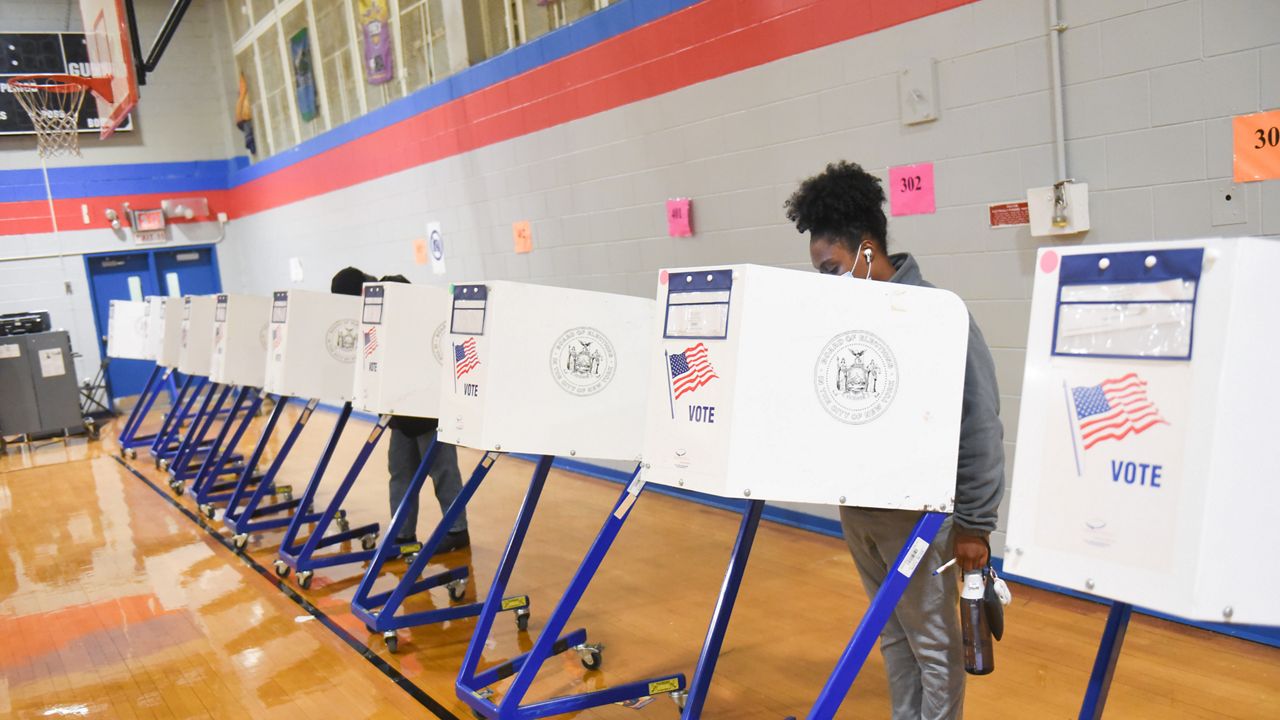On Election Day.
What to bring.
Like registering, what you need to bring with you to vote will depend on your state. The list below has common examples of what states and the District of Columbia require to vote. Check what to bring on Election Day: visit https://www.nass.org/can-i-vote/valid-forms-id.
- Your Voter registration card. If you don’t have your voter registration card, reach out to your state election office to get a replacement. You can find the link to your state or jurisdiction’s office here: https://www.usa.gov/state-election-office.
- A utility bill showing the address where you are registered.
- Your ID if you have one (it is required in some states). If you don’t have an ID, see the section below on provisional ballots.
- If it is your first time voting and you registered by mail, you may be required to show identification. You can use a current and valid photo ID, or a copy of a current utility bill, bank statement, government check, paycheck, or other government document that shows your name and address.
- A pen, if your state does not use electronic voting.
- The National Election Protection Hotline phone number: (866-OUR-VOTE / 866-687-8683).
- Snacks and water.
- A charged phone.
- A list of who and what you want to vote for (or against).
- A comfortable outfit and shoes.
- If your state allows it, your own seating, if you do not use a wheelchair. Depending on your polling station and the time you go to vote, you could be standing for a while.
- This checklist!
What to do if:
If the name and/or gender marker on your driver’s license or state issued ID doesn’t match your gender expression.
- Vote. There is no requirement that your physical presentation must match the stereotypes associated with a “male” or “female” name or gender marker.
- Do ensure that your name and address on your voter registration card/record is the same as the name and address on your ID before it is time to vote.
- If your ID has a different name or address than your voter registration card/record, you may wish to bring your court ordered name change or other documentation with you. However, depending on your state, you may have difficulty with voting. See more below about what to do if you are told that you are not allowed to vote.
If you are currently or formerly incarcerated.
- If you are currently incarcerated and registered to vote in the District of Columbia, Maine, or Vermont, you can still vote while in custody.
- Most states allow formerly incarcerated people to vote following the completion of their sentence. However, the reinstatement of voting rights is handled very differently from state to state. In some states, what you were convicted of will also factor into whether your state will reinstate your voting rights.
- This guide provides an overview of when your voting rights will be restored and if they are restored automatically or if you will have to request your right to vote be restored: ncsl.org/research/elections-and-campaigns/felon-voting-rights.aspx.
If you are experiencing homelessness.
If you are turned away from your polling place.
- Look for a volunteer attorney or poll observer for assistance.
- Call the National Election Protection Hotline at 866-OUR-VOTE (866-687-8683).
- If you are unable to connect with these folks and are still being told you cannot vote, request a “provisional ballot” and the follow-up instructions. You are usually required to return to the election officials in the days following the election in order to prove your identity for your provisional ballot to be counted.
If you need to request a provisional ballot.
- Provisional ballots ensure that voters are not excluded from the voting process due to an administrative error. When there is a question about a voter’s eligibility—the potential voter’s name is not on the voter rolls, a required identification document isn’t available or other issues—the election official is required to offer the voter a provisional ballot instead of a regular ballot. You are usually required to return to the election officials in the days following the election in order to prove your identity for your provisional ballot to be counted.
If you are harassed by poll workers about your ID.
- Look for a volunteer attorney or poll observer.
- Call the National Election Protection Hotline at 866-OUR-VOTE (866-687-8683).




